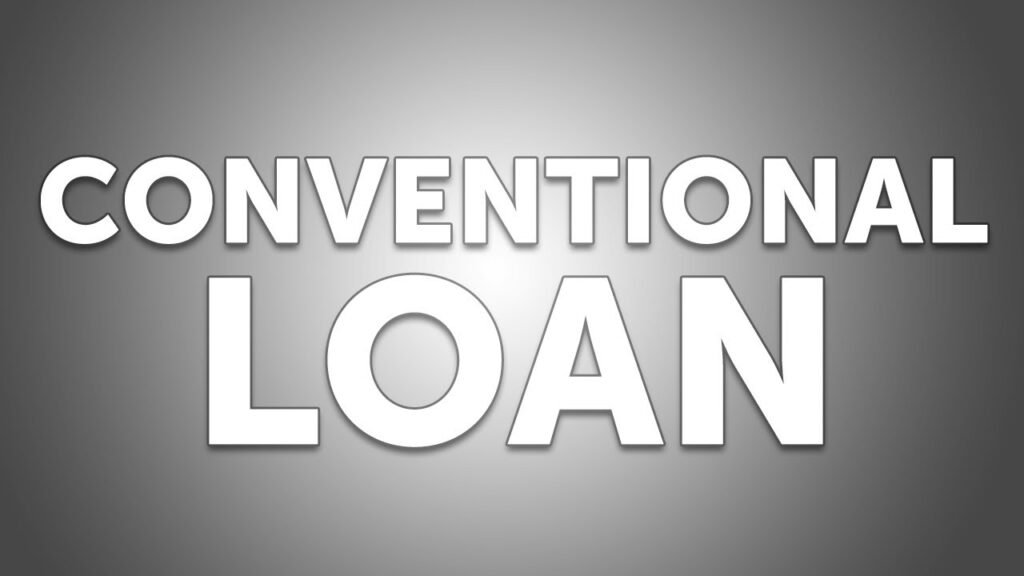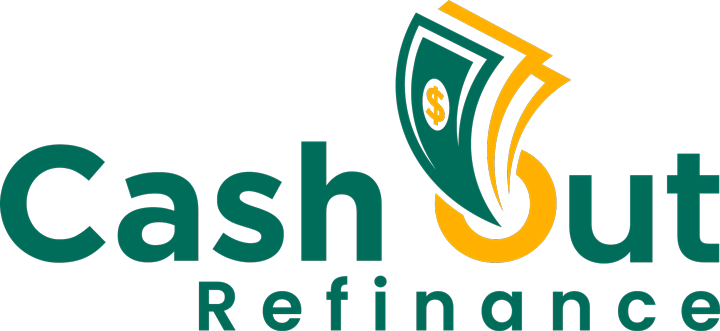When homeowners think about tapping into their home equity, one of the most popular options is a conventional cash-out refinance. This financial tool allows you to refinance your existing mortgage while also withdrawing cash from your home’s equity, all wrapped into a single new loan. Whether you need funds for home improvements, debt consolidation, or major purchases, a conventional cash-out refinance can be a flexible and cost-effective solution. But how exactly does it work, and what should you know before applying?
In this comprehensive guide, we will dive deep into the conventional cash-out refinance process, explaining everything from eligibility requirements to the specific steps involved. We’ll also explore how it differs from other refinance options, so you can decide whether it’s the right financial move for you.

What is a Conventional Cash-Out Refinance?
A conventional cash-out refinance is a type of mortgage refinancing that allows homeowners to replace their current mortgage with a new, larger loan, taking the difference in cash. Unlike other refinance options, which focus on reducing interest rates or monthly payments, a cash-out refinance is specifically designed for homeowners looking to access the equity they’ve built up in their homes.
For example, let’s say your home is worth $400,000, and you still owe $200,000 on your current mortgage. With a conventional cash-out refinance, you could refinance your loan for, say, $300,000—paying off the original $200,000 mortgage and receiving $100,000 in cash, minus closing costs. This cash can be used for any purpose, from renovating your home to consolidating high-interest debt.
How Does a Conventional Cash-Out Refinance Work?
To understand the mechanics of a conventional cash-out refinance, it’s essential to break down the steps and elements involved:
- Determine Home Equity: Home equity is the portion of your home’s value that you own outright. It’s calculated by subtracting your current mortgage balance from the appraised value of your home. The more equity you have, the more cash you can potentially access through a cash-out refinance.
- Loan-to-Value Ratio (LTV): Most lenders will allow you to borrow up to 80% of your home’s appraised value in a cash-out refinance. This figure is known as the loan-to-value (LTV) ratio. In the example above, if your home is valued at $400,000, you could refinance up to $320,000 (80% of $400,000). If you owe $200,000 on your current mortgage, that would leave $120,000 potentially available for cash-out.
- Credit and Income Requirements: Since this is a conventional loan (not backed by government programs like FHA or VA loans), lenders typically require a credit score of at least 620. Higher credit scores will often result in better interest rates. Your income, employment status, and debt-to-income (DTI) ratio will also be assessed to ensure you can handle the new loan’s payments.
- New Mortgage Terms: When you complete a conventional cash-out refinance, you’ll receive new mortgage terms, including a new interest rate, loan amount, and repayment period. Depending on current rates, you may be able to lock in a lower interest rate than your original mortgage, though rates for cash-out refinances are typically slightly higher than a traditional refinance.
- Closing Costs: As with any mortgage refinance, there are closing costs involved, usually ranging from 2% to 5% of the loan amount. These fees cover appraisal, title search, and lender fees, among others. In some cases, these costs can be rolled into the new loan balance, so you won’t need to pay them upfront.
Eligibility Requirements for a Conventional Cash-Out Refinance
Not every homeowner is eligible for a conventional cash-out refinance, and there are specific requirements that must be met before you can access your home’s equity.
- Credit Score: Most lenders require a minimum credit score of 620 for a conventional cash-out refinance. Borrowers with higher credit scores (typically above 700) will qualify for better interest rates and terms.
- Loan-to-Value (LTV) Ratio: As mentioned earlier, the maximum LTV ratio allowed for a conventional cash-out refinance is typically 80%. This means you need at least 20% equity in your home. Some lenders may have stricter LTV requirements, so it’s essential to shop around for the best offer.
- Debt-to-Income (DTI) Ratio: Lenders want to ensure that you can comfortably manage your new mortgage payments. A DTI ratio compares your monthly debt payments (including the new mortgage) to your gross monthly income. Conventional lenders typically look for a DTI ratio of no more than 43%.
- Income and Employment Verification: You’ll need to provide documentation proving your income and employment status. Lenders will review your tax returns, W-2s, and pay stubs to verify that you have a stable income that can support the new loan.
- Home Appraisal: Your lender will require a home appraisal to determine the current market value of your property. The appraisal helps the lender calculate your LTV ratio and ensures that the home’s value supports the new loan amount.

How Does Conventional Cash-Out Refinance Differ From Other Refinance Options?
There are several types of refinancing available to homeowners, each with its own purpose and benefits. Here’s how a conventional cash-out refinance compares to other common refinance options:
Rate-and-Term Refinance
- Purpose: This type of refinance focuses on changing the interest rate or term (duration) of your existing mortgage. Homeowners use it to secure a lower interest rate, reduce monthly payments, or shorten the loan term.
- Key Difference: Unlike a cash-out refinance, a rate-and-term refinance does not provide cash. Its sole focus is on improving the terms of your existing loan.
FHA Cash-Out Refinance
- Purpose: Similar to a conventional cash-out refinance but backed by the Federal Housing Administration (FHA). It allows homeowners to borrow up to 80% of the home’s value.
- Key Difference: FHA loans typically have more lenient credit score requirements (as low as 580), but they come with upfront and annual mortgage insurance premiums (MIP), making them more expensive over time.
VA Cash-Out Refinance
- Purpose: Available to qualified veterans and service members, VA cash-out refinances allow you to borrow up to 100% of your home’s value.
- Key Difference: VA loans have no private mortgage insurance (PMI) requirement, and they offer 100% LTV, which makes them a unique option for veterans. However, they are limited to those who qualify based on military service.
HELOC (Home Equity Line of Credit)
- Purpose: A HELOC is not technically a refinance but rather a revolving line of credit secured by your home’s equity. You can borrow from the line of credit as needed and repay it over time.
- Key Difference: A HELOC allows ongoing access to your home’s equity, while a cash-out refinance is a one-time transaction that replaces your existing mortgage. HELOCs typically have variable interest rates, which can fluctuate over time.
Timeline and Steps to Complete a Conventional Cash-Out Refinance
The conventional cash-out refinance process typically takes 30 to 45 days from start to finish, depending on the lender and your financial situation. Here’s a breakdown of the key steps involved:
- Shop Around for Lenders: Start by comparing offers from multiple lenders to find the best interest rates and terms. Many lenders offer pre-qualification services, which can give you an idea of the rates you qualify for without affecting your credit score.
- Submit a Loan Application: Once you’ve chosen a lender, you’ll need to fill out a loan application. Be prepared to provide detailed information about your income, employment, assets, and debts. This is also the time to lock in your interest rate, if desired.
- Home Appraisal: Your lender will order an appraisal to determine the current value of your home. The appraisal is essential for calculating your loan-to-value ratio and determining how much equity you can access.
- Underwriting Process: The lender’s underwriters will review your application, verifying your income, credit history, and property details. They’ll ensure that you meet the eligibility requirements for the new loan.
- Closing the Loan: If your loan is approved, you’ll schedule a closing date where you’ll sign the new mortgage documents. At closing, you’ll also pay any closing costs (unless they’re rolled into the loan). Once the loan is finalized, your existing mortgage will be paid off, and you’ll receive the cash-out portion of the loan.

Is a Conventional Cash-Out Refinance Right for You?
A conventional cash-out refinance can be an excellent way to access your home’s equity, but it’s essential to weigh the pros and cons carefully. Consider the following:
- Pros: Lower interest rates compared to personal loans or credit cards, the ability to use cash for any purpose, and the potential for tax deductions on mortgage interest.
- Cons: Closing costs, resetting your mortgage term, and the possibility of over-borrowing against your home’s value.
Before making any decisions, it’s wise to consult with a mortgage professional who can help you evaluate your financial situation and determine whether a conventional cash-out refinance is the best option for your needs.
The conventional cash-out refinance process is a powerful tool for homeowners looking to unlock the value of their property. By understanding how it works, the eligibility requirements, and the steps involved, you’ll be well-equipped to decide if this type of refinance is right for you. Whether you’re planning home improvements, paying off debt, or making a major purchase, a cash-out refinance can help you achieve your financial goals.

